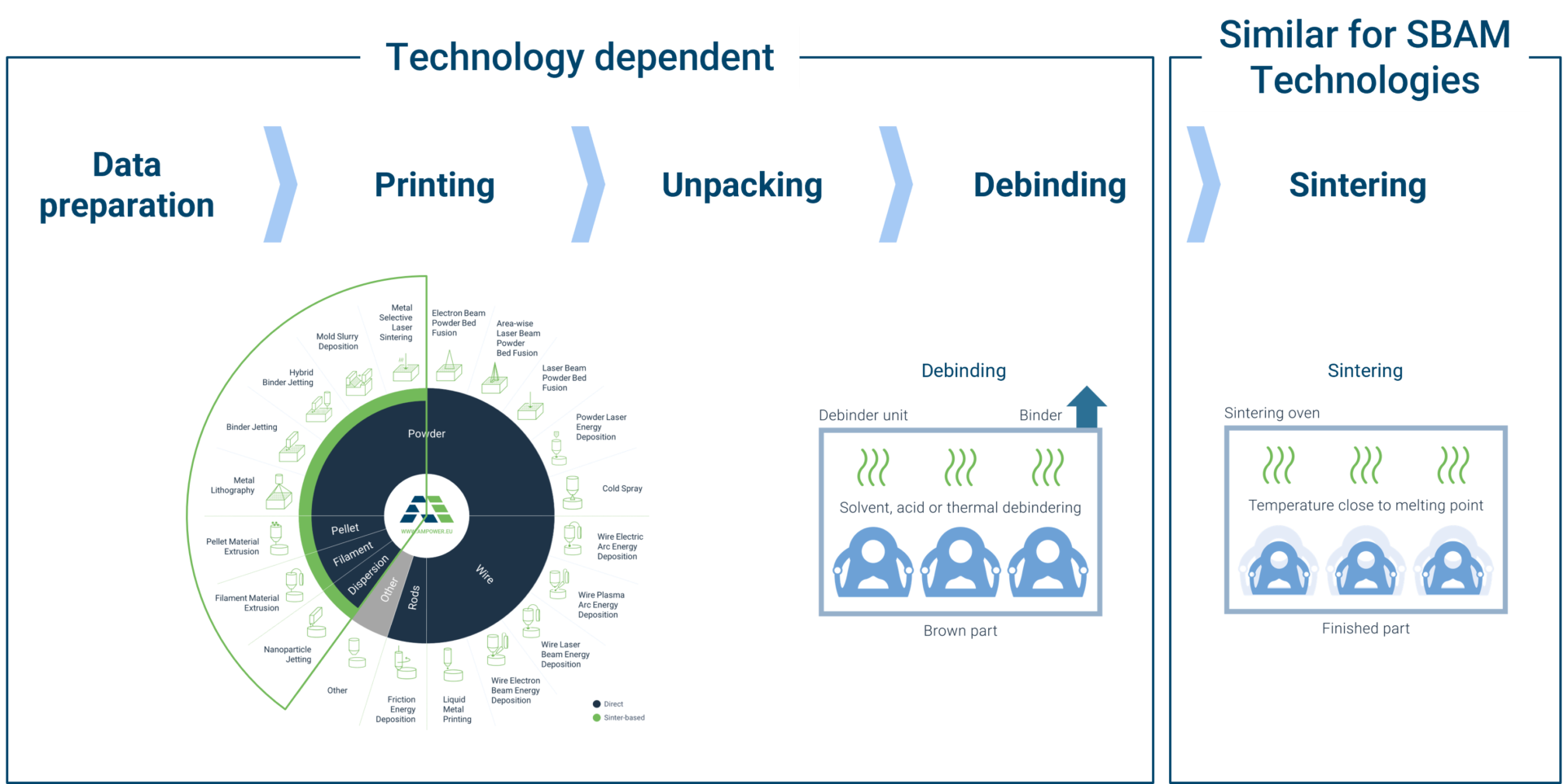Cost comparison Valve Block old
Cost comparison valve block
What are production costs for the valve block?
This case study breaks down the production cost of a valve block for suitable technologies. Besides a breakdown of the total cost per part, the manufacturing time and cost per volume for different production quantities is provided.
What you will find in this section
Valve Block overview
Valve block not feasible for DED
The technologies considered for the valve block are Metal Binder Jetting, Powder Bed Fusion and Metal ME. Due to dimensions of 30 x 15 x 60 mm and a total part volume of 7,5 cm³, the part is not feasible for Laser Metal Deposition (LMD) and Wire Arc Additive Manufacturing (WAAM) technologies which are thus excluded from this comparison. The calculation is made for Stainless Steel 17-4PH, which is available for all technologies. The calculation is made for 100 parts with a comparison of 10 parts and 1 000 parts at the end.
The focus in this section lies exclusively on the cost comparison. The fact that the achievable part quality varies between the technologies must be kept in mind.
The following post processing operations are included in the calculation:
- Unloading and unpacking of parts (All technologies)
- Heat Treatment (L-PBF)
- Part separation (L-PBF)
- Support Removal (L-PBF, E-PBF, ME)
- Debinding (ME)
- Sintering (BJT and ME)

Cost per part
Binder Jetting with lowest cost per part
Binder Jetting is the most cost-effective technology for producing this part for a series of 100 parts. The main difference results from low process-costs of ~5 €. These low costs can be achieved by producing all 100 parts in less than 15 hours on a medium-sized system. The 10 € post processing cost result from unpacking and sintering.
Laser and Electron Beam Powder Bed Fusion have similar cost per part of ~43 €. The thin walls make the part challenging for EPBF.
Material Extrusion results in the highest cost for this part. This is mainly driven by the long printing time of over 5 hours per part.
The corresponding relative breakdown of costs shows that for both Powder Bed Fusion technologies, the build process makes up the majority of the costs with 59%.
For Metal Binder Jetting, the low process costs result in post processing cost of 59%, which is mainly driven by the sinter and unpacking cost.
For Metal Extrusion, 75% of all cost result from the printing process. This is due to the long production time that can be seen in the next paragraph.
Production time
Binder Jetting with very low printing time but higher effort for sintering
The chart on the left breaks down the production time in days for the entire batch of 100 parts into the following sub-processes:
- Process: includes data preparation, machine setup and printing
- Post processing: includes support removal, debind and sintering and other operations
Binder Jetting shows the lowest printing time with ~15 hours for all parts, compared to ~2,5 days for PBF and ~23 days for Material Extrusion. Taking into account post processing, Binder Jetting still keeps the lowest production time of ~2,5 days compared to over 3 days for E-PBF, ~4,5 days for L-PBF and ~27 days for Metal Extrusion.
Cost per cm³
Strong cost decrease for higher production volumes
The right graph shows the corresponding cost per cm³ for quantities ranging from 10 to 1000 parts. While Binder Jetting is the most cost effective technology for the 100 parts discussed in this scenario, lower quantities favour other technologies.
When printing a fewer than 8 pieces, Metal FDM is the cheapest technology since it is not a batch-wise process. For quantities between 8 and 15 pieces, Laser Powder Bed Fusion is the most cost-effective technology.
With Electron Beam Powder Bed Fusion, the parts could be stacked on top of each other, resulting in several 100 parts in one build job. This makes the technology cheaper compared to L-PBF for volumes >100 parts.
As soon as the quantity results in a reasonable nesting density of the build job, which in this case is starting from 15 parts, Binder Jetting remains the cheapest technology.







